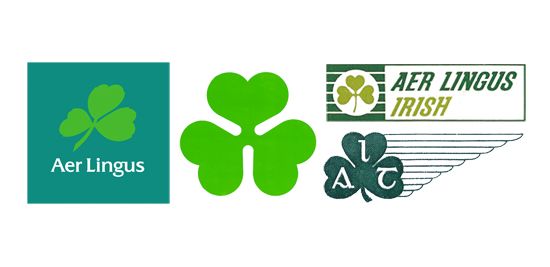THE INAUGURAL jet flight by Aer Lingus too place on December 13, 1960. It heralded ina whole new era for those of us who needed to get home in a hurry.
To celebrate the anniversary MAL ROGERS has researched ten facts about the national carrier.
- Aer Lingus Teoranta was registered as an airline on May 22, 1936. Teoranta means ‘limited company’. The word ‘Lingus’ is derived from the Irish ‘loingeas’ meaning ‘fleet’. Today Aer Lingus is Ireland's national airline, using the IATA designator EI.
- The first Aer Lingus plane was a De Havilland 84 Dragon biplane with a capacity of six. It was bought for the sum of £2400. The tourism trade was still in its infancy in Ireland, although visitors in the 1930s in the other direction could be assured of a room for the night in one of “Britain’s leading temperance hotels from 8s/6d a night”. Which would be about 40p today, and sneak your own drink in.
- The first route was a flight from Baldonnel Airfield in Dublin to Bristol, inaugurated on May 27, 1936. Aer Lingus' first plane flew at a speed of 130mph, and on its first flight landed (as nearly all Aer Lingus planes have done ever since) on schedule!
- The fourth Aer Lingus plane to be bought was called 'The Big Fellow', not because of its size but due to its deployment to England during the Treaty Talks. It was there in case the talks failed and Michael Collins, known as the Big Fellow, had to be spirited out of the country.
- Brendan Behan was one of the first passengers to avail himself of the new Aer Lingus trans-Atlantic jet route in 1960 - he was heading for New York to attend the opening of The Hostage. He pledged he would drink only soda water 'a good drink, invented in Dublin', but it proved to be a promise he, alas, wouldn't keep.

- In 1963, Aer Lingus's management thought it would be a good idea to bring some Carvairs to the fleet. In that type of plane, passengers could bring their cars into the plane and fly with their cars on board. But taking your car with you on a plane was an idea that never, ahem, really took off.
- In September 1977, some of Ireland’s greatest art treasures were conveyed across the Atlantic on four separate Boeing 747 flights – the Book of Kells, the Ardagh Chalice, the Tara Brooch, the Cross of Cong, St Batrick’s Bell and the Glenasheen Collar. They were bound for an exhibition in the Metropolitan Museum of Art in New York. They each had their own black box, that is a transponder, as well as the aircraft itself . . .. just as a precaution.
- Aer Lingus was the first airline outside Alitalia to be used by Pope John Paul II, when in 1979 he flew from Rome to Dublin and later from Shannon to Boston.
- An Aer Lingus flight from Dublin to Rome on May 1, 1981 were hi-jacked by a Frenchman. It was May Day, and presumably the crew radioed eponymously “May Day, May Day.”
The highjacking was resolved without violence, the 113 passengers and crew released unharmed, and thearrested. hijacker, a fomer Australian monk called Laurence Downey. He had been thrown out of the monastic order of Trappists for punching a superior in the face. Mr Downey gave one of the most bizarre reasons in the history of aviation for his action — he wanted to know the Third Secret of Fatima. In the event, Mr Downey failed in his attempt to uncover the secret, and subsequently received a lengthy jail sentence for his trouble, none the wiser about the Visions in the central Portuguese town of Fatima.
- In the late 1950s a Wayfarer aircraft was about to depart for London, under the command of Captain JS Barrett. After taxiing to the end of the runway the Captain and carrying out pre-flight checks the Captain announced that due to a technical fault they were returning to the terminal.
He apologised to the passengers, and invited them to disembark and enjoy some refreshment at Aer Lingus’s expense.
The fault was duly mended, and the Wayfarer was soon on its way again.
But regrettably the fault recurred, and the plane had to taxi back to the dearture ramp. After about an hour-and-a-half the plane was back out on the runway, and this time np problem.
The pilot apologized over the PA, and expressed the hope that not too much inconvenience had been called. He finished his address by telling the passengers, “Will you please make sure your seat belts are properly fastened, and do your best to enjoy the flight to London.”
The captain, however, forgot to switch off the PA system and his next words resounded through the cabin: “. . . if we ever f****ing get there.”
A muffled laughter broke out amongst the passengers.
The aircraft roared down the runway and landed in London without mishap.
However at least one passenger took grave exception to the captain’s faux pas, and complained about the captain’s language.
Captain Barrett, however, escaped with a reprimand.

